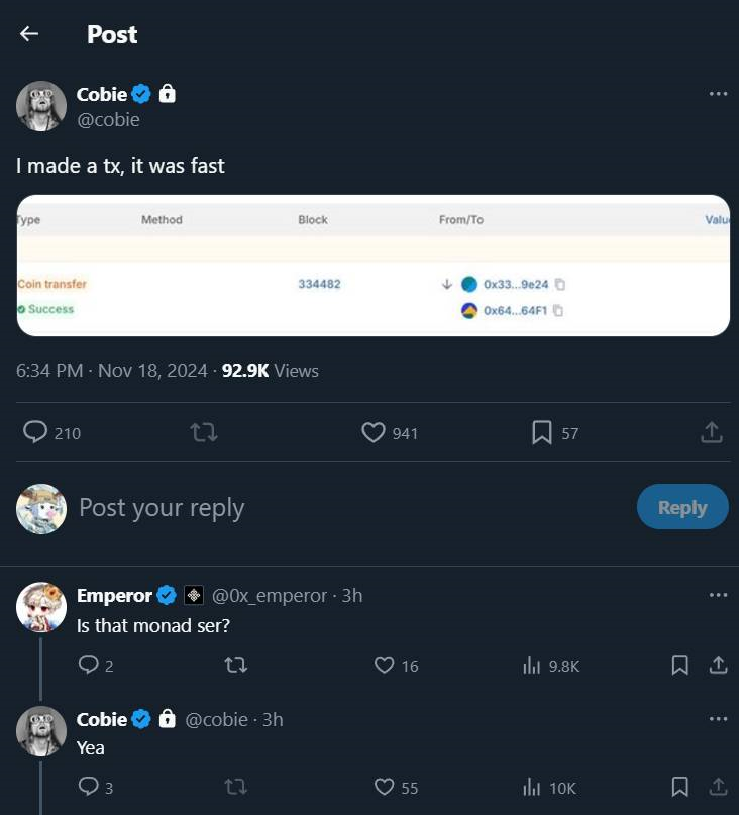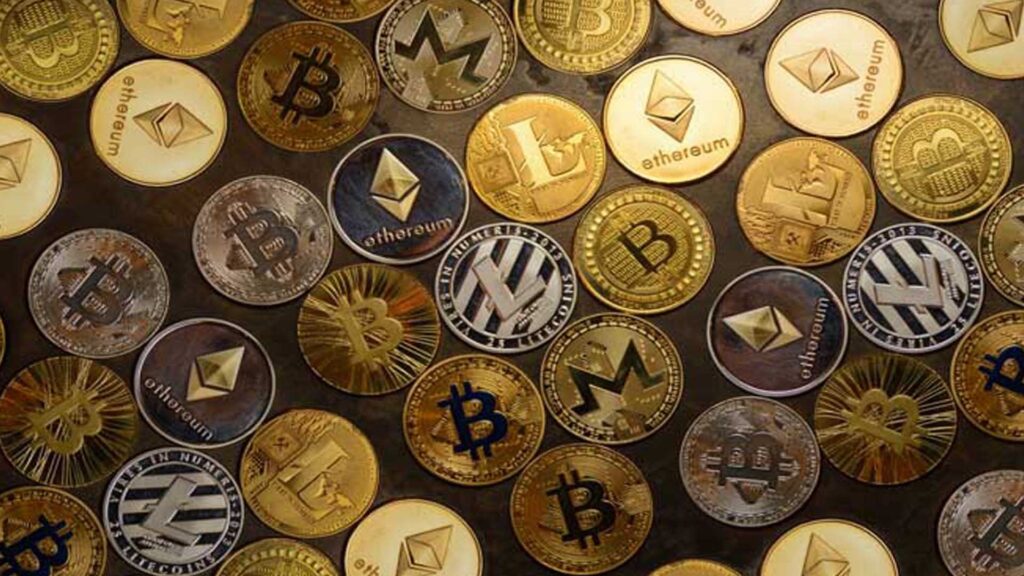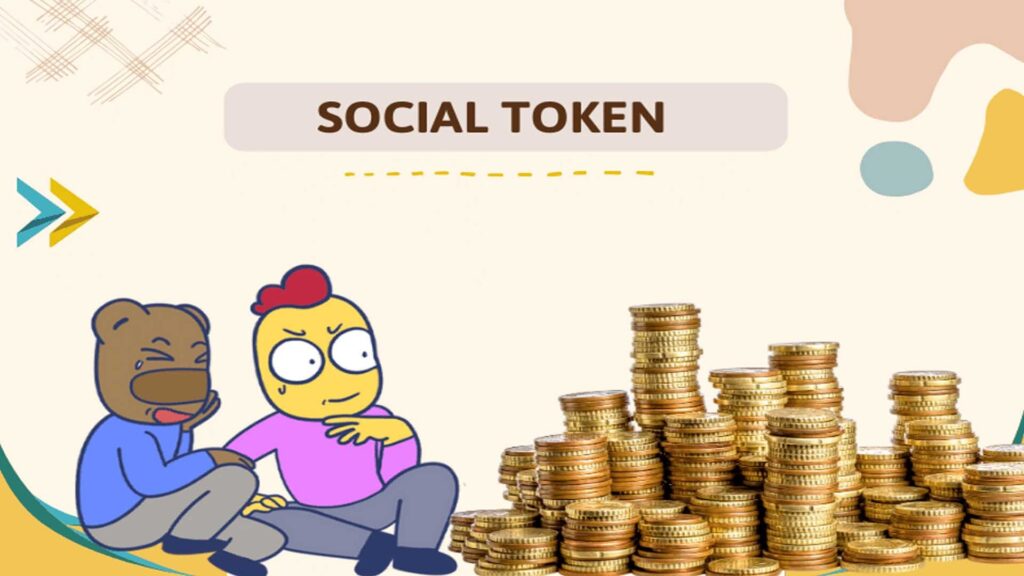Monad, a Layer-1 EVM blockchain with a processing speed of up to 10,000 TPS in internal devnet testing, has officially entered the testnet testing phase.
According to multiple sources revealed on the social networking platform X (formerly Twitter), the Ethereum-compatible layer-1 blockchain Monad has begun deploying its testnet in stages.
“I made a transaction, it was very fast” – Jordan Fish, a famous crypto trader also known as Cobie, wrote on X. Cobie later confirmed his post about Monad’s testnet.

Monad is a layer-1 blockchain that uses the Proof-of-Stake consensus mechanism and is compatible with EVM, aiming to achieve a transaction speed of up to 10,000/s thanks to the Parallel Execution feature, solving the remaining shortcomings of the largest smart contract blockchain today, Ethereum.
The company behind the project, Monad Labs, was developed by former employees of Wall Street hedge fund Jump Trading and its crypto investment arm Jump Crypto, and raised $19 million in a seed round in February 2023 with Dragonfly Capital and other prominent crypto angel investors.
In April, Monad Labs confirmed it had closed a $225 million funding round led by Paradigm, valuing Monad at $3 billion and making it the highest-funded blockchain project in 2024 and 2023, behind Wormhole ($225 million), another Jump Crypto spinoff.
The Monad testnet launch follows the protocol’s devnet launch in March, with internal testing reaching 10,000 transactions per second (TPS). “This is a major milestone for our team,” Keone Hon, CEO and co-founder of Monad Labs, said at the time.
Monad claims to optimize the way Ethereum works to provide massive throughput, reaching 10,000 TPS with a block time of one second. However, this will likely be challenging for node operators, as the hardware requirements are twice as large as the main Ethereum blockchain.
Rather than simply copying the Ethereum source code, Monad says it is building a completely new EVM from scratch, using a pipelined architecture. This approach has the advantage of allowing for more efficient processing and immediate block finality rather than executing each process one at a time. Monad is also compatible with EVM bytecode, making it easy for Ethereum developers to port their existing dApps to the Monad blockchain.
According to the technical documentation released by Monad in September 2023, Monad’s token will be used to pay fees for transactions included in blocks and executing transactions, known as carriage costs. The token was initially called “mon,” but Monad later removed the token name from the documentation without explaining why.

